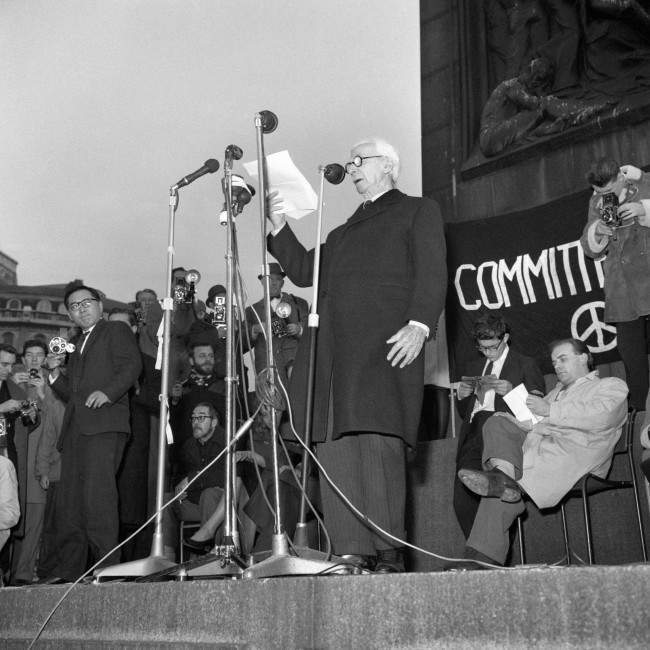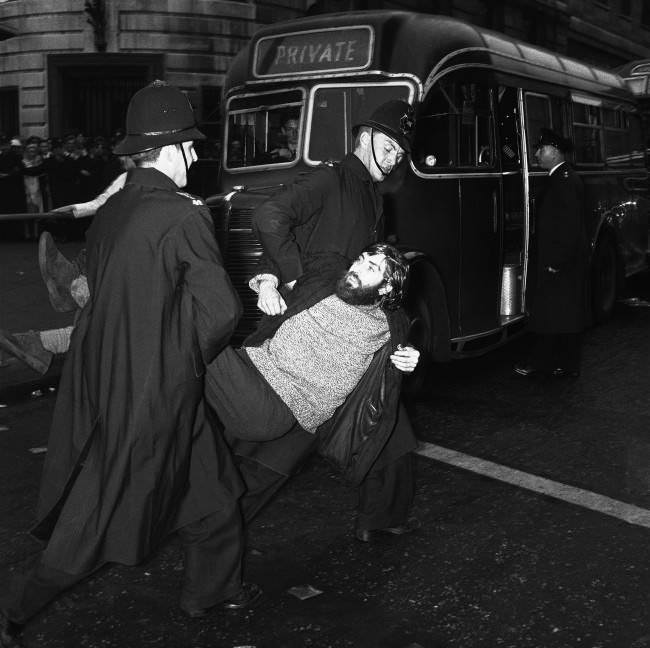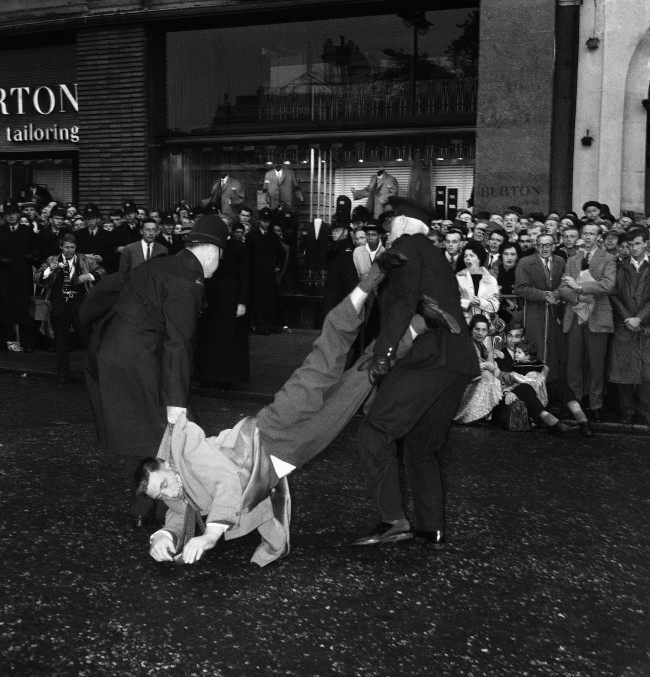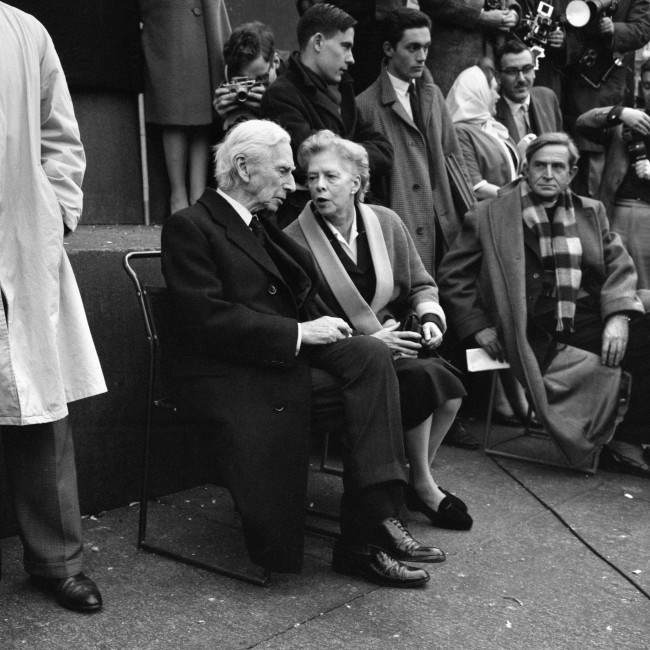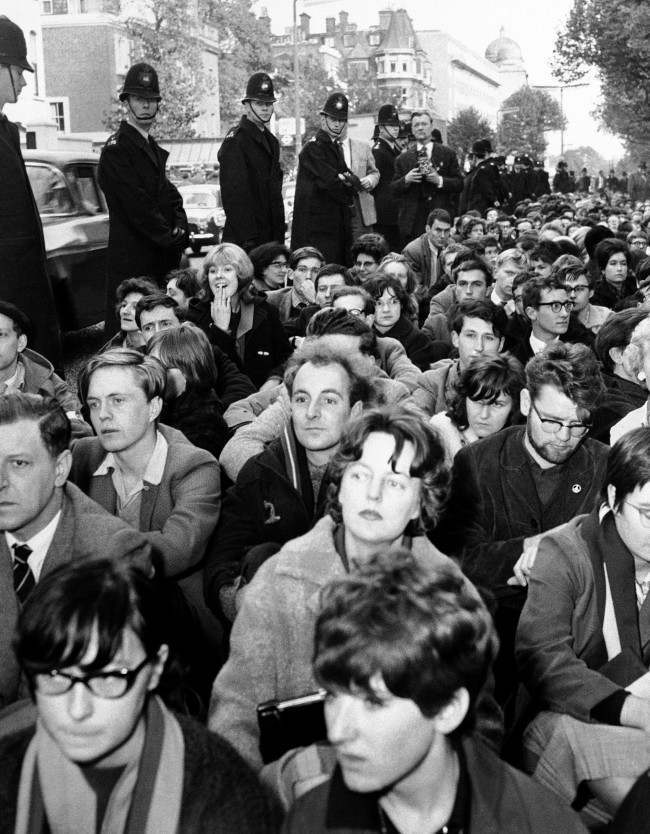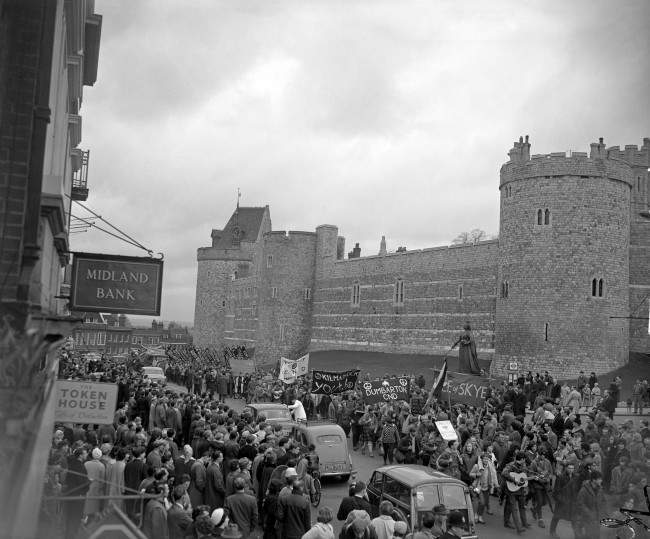The Ban the Bomb movement emerged in the United Kingdom during the early years of the Cold War. Following the devastation of World War II, many people were deeply concerned about the threat of nuclear weapons. The fear of nuclear war loomed large, and many felt that Britain’s nuclear arsenal was a danger to global peace. This growing anxiety led to the formation of the Campaign for Nuclear Disarmament (CND) in 1957, which became the main organization behind the Ban the Bomb movement.
One of the most significant events in the Ban the Bomb movement was the annual march from Aldermaston to London. This march began in 1958 and was organized to protest against nuclear weapons. The Atomic Weapons Research Establishment at Aldermaston, located in Berkshire, was a key site for British nuclear research. Activists chose this location as the starting point for their demonstrations. They wanted to draw attention to the production and testing of nuclear weapons.
The first Aldermaston march took place over the Easter weekend in 1958. This event was notable for bringing together tens of thousands of people. Participants included families, students, and prominent figures from various walks of life. They marched the approximately 50 miles from Aldermaston to Trafalgar Square in London, chanting slogans and carrying banners. The march was peaceful, but it was filled with passion and determination.
Read more
The CND used the Ban the Bomb logo, designed by Gerald Holtom, as a powerful symbol for the movement. Holtom created the logo for the first Aldermaston march, combining elements of semaphore and the peace symbol. The design quickly became recognizable and was adopted by anti-war movements around the world. Today, it remains a universal symbol of peace and disarmament.
The success of the first march led to subsequent marches in the following years. The second Aldermaston march occurred in 1959, again attracting large crowds. By this time, the CND was gaining momentum and support. The movement was not only about protesting nuclear weapons but also about promoting a broader message of peace and social justice.
In 1960, the third Aldermaston march took place, continuing the tradition of peaceful protest. The movement continued to grow, with more people joining the cause each year. The Easter marches became a key event in the British anti-nuclear movement. Participants used the marches to express their dissatisfaction with government policies concerning nuclear weapons.
The marches also featured speeches from notable figures. Activists, writers, and politicians spoke about the dangers of nuclear weapons and the importance of disarmament. The CND aimed to raise awareness about the risks associated with nuclear arms and to pressure the government to take action.
In addition to the marches, the Ban the Bomb movement engaged in various forms of activism. The CND organized meetings, demonstrations, and educational campaigns to spread their message. They encouraged people to write to their MPs and demand change. The movement also sought to unite different groups who were advocating for peace, including religious organizations and women’s groups.
The Ban the Bomb movement was not without challenges. The government and some media outlets often dismissed the CND as radical or out of touch. Despite this, the movement persisted. Many supporters believed that their efforts would eventually lead to meaningful change.
Throughout the 1960s, the CND continued to organize protests and events. The movement gained international attention, especially during the Cuban Missile Crisis in 1962. The fear of nuclear war intensified during this period, prompting more people to join the cause.
The Ban the Bomb movement also inspired similar movements in other countries. Activists in the United States, Europe, and beyond adopted the CND’s strategies and symbols. The message of peace and disarmament resonated globally, as people recognized the dangers of nuclear weapons.









